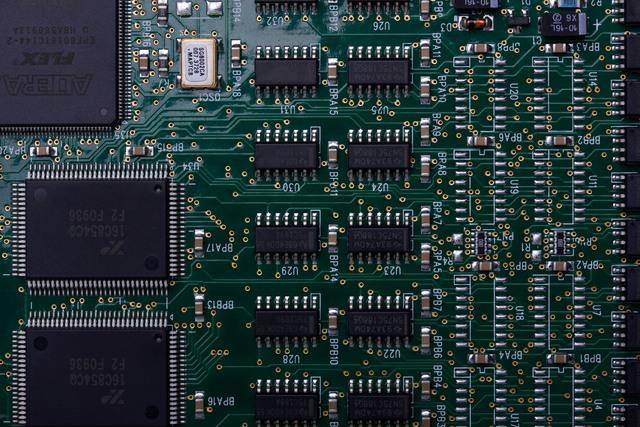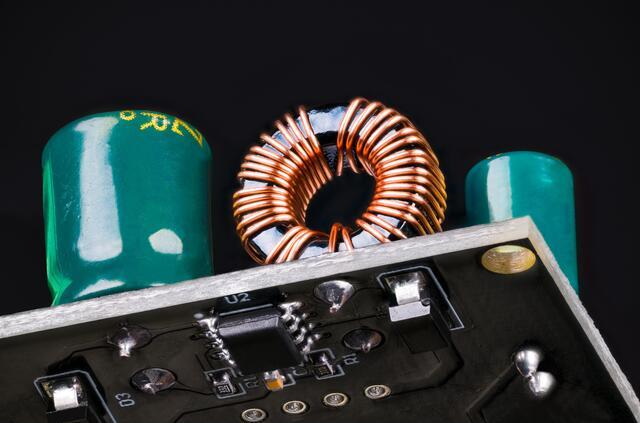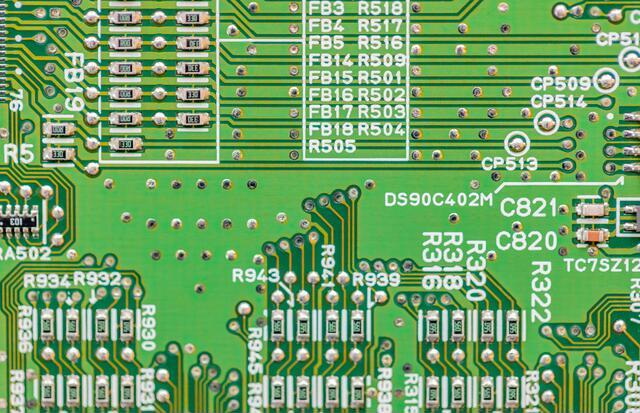Content Menu
● Introduction to Lead-Free PCB Assembly
>> Benefits of Lead-Free PCB Assembly
● Innovations in Soldering Techniques
>> Evolution of Lead-Free Solder Alloys
>> Advanced Flux Formulations
● Integration of Smart Manufacturing Technologies
>> Real-Time Monitoring and Data Analytics
● Adoption of Advanced Materials
>> High-Density Interconnect (HDI) PCBs
● Challenges and Future Directions
>> 3D PCB Printing
>> Sustainable Manufacturing Practices
● Conclusion
● Frequently Asked Questions
>> 1. What are the primary benefits of lead-free PCB assembly?
>> 2. How does AI contribute to lead-free PCB assembly?
>> 3. What are some advanced materials used in lead-free PCBs?
>> 4. What are the challenges faced in lead-free PCB assembly?
>> 5. How does the RoHS directive influence lead-free PCB assembly?
● Citations:
The future of lead-free PCB assembly is being shaped by a series of innovative technologies and methodologies, primarily driven by environmental regulations, technological advancements, and market demands. The shift towards lead-free PCBs has been a significant trend in the electronics industry, influenced by the Restriction of Hazardous Substances (RoHS) directive and other environmental protection policies. This article explores the key innovations driving the future of lead-free PCB assembly, focusing on advancements in soldering techniques, the integration of smart manufacturing technologies, and the adoption of advanced materials.

Introduction to Lead-Free PCB Assembly
Lead-free PCB assembly refers to the process of assembling electronic components onto a printed circuit board without using lead-based solder. This approach is crucial for meeting environmental protection standards and reducing the health risks associated with lead exposure. The RoHS directive has been instrumental in promoting the use of lead-free soldering, which typically involves solder alloys like SAC305 (Sn96.5Ag3.0Cu0.5) that offer higher melting points and improved reliability compared to traditional lead-based solders.
Benefits of Lead-Free PCB Assembly
1. Environmental Protection: Lead-free PCBs reduce environmental pollution by minimizing the amount of toxic lead in electronic waste, making it easier to recycle and dispose of electronic devices.
2. Improved Reliability: Lead-free solders have a higher melting point, which enhances the durability of solder joints under varying temperatures, improving the overall reliability of electronic devices.
3. Market Competitiveness: Compliance with RoHS and other environmental regulations enhances a company's market image and competitiveness by aligning with consumer preferences for eco-friendly products.
Innovations in Soldering Techniques
Advancements in soldering techniques are pivotal for the future of lead-free PCB assembly. These innovations include:
- Reflow Soldering Techniques: Convection, vapor phase, and infrared reflow soldering methods have been optimized to accommodate the higher melting temperatures of lead-free solder alloys, ensuring proper solder joint formation and process control. For instance, lead-free reflow soldering involves precise temperature control, typically reaching temperatures between 240°C to 248°C, to ensure even melting of the solder paste[6].
- Selective Soldering Systems: These systems provide precise control over solder deposition and flux application, improving solder joint integrity for through-hole components.
- Nitrogen Reflow Soldering: This method is used to prevent oxidation during the soldering process, especially for components prone to oxidation.
Evolution of Lead-Free Solder Alloys
The development of new lead-free solder alloys has been a significant advancement. Alloys such as tin-silver-copper (Sn-Ag-Cu), tin-silver (Sn-Ag), tin-copper (Sn-Cu), and tin-bismuth (Sn-Bi) offer improved wetting properties, reduced melting temperatures, and enhanced mechanical strength compared to traditional lead-based solders[2]. These alloys are crucial for achieving reliable solder joints in complex PCB designs.
Advanced Flux Formulations
Flux plays a crucial role in lead-free soldering by aiding in solder wetting, oxide removal, and surface cleanliness. Advanced flux formulations, including activated rosin, water-soluble fluxes, no-clean fluxes, and low-residue fluxes, improve solder joint quality, reliability, and post-soldering cleanliness[2]. These formulations are designed to minimize residue and ensure clean solder joints, which is essential for high-reliability applications.
Integration of Smart Manufacturing Technologies
The integration of smart manufacturing technologies, such as artificial intelligence (AI) and machine learning (ML), is transforming the PCB assembly process. AI-driven automation enhances design optimization, assembly, and quality control by:
- AI-Powered Design Optimization: Automated PCB design software uses AI to suggest optimal layouts, reducing design flaws and improving performance. This includes optimizing component placement and routing to minimize signal interference and improve thermal management[1].
- Predictive Maintenance: ML algorithms analyze equipment performance to predict failures, reducing downtime and improving overall efficiency. Predictive maintenance ensures that manufacturing lines remain operational, minimizing production delays and enhancing productivity[1].
Real-Time Monitoring and Data Analytics
Real-time monitoring and data analytics are integral components of smart manufacturing. These technologies enable real-time tracking of production processes, allowing for immediate adjustments to improve efficiency and quality. By analyzing data from various stages of production, manufacturers can identify bottlenecks and optimize workflows to enhance productivity and reduce waste.

Adoption of Advanced Materials
The use of advanced materials is another key innovation in lead-free PCB assembly. These materials include:
- Flexible and Stretchable PCBs: Ideal for wearables and IoT devices, these PCBs offer enhanced durability and design flexibility. They are made from materials like polyimide and liquid crystal polymers, which provide excellent heat resistance and mechanical strength[4].
- Graphene and Nanomaterials: These materials provide improved conductivity and heat resistance, making them suitable for next-generation electronics. Graphene, in particular, has shown potential for enhancing thermal management in high-power devices[1].
- Biodegradable and Non-Toxic Substrates: Driven by environmental concerns, manufacturers are adopting lead-free and eco-friendly PCB substrates. These substrates reduce electronic waste and support sustainable manufacturing practices[1].
High-Density Interconnect (HDI) PCBs
HDI technology is becoming increasingly prevalent due to its ability to support smaller, more compact designs. With microvias, laser drilling, and sequential lamination processes, HDI PCBs enable higher wiring densities, improving signal integrity and allowing for more complex circuit designs[4]. This technology is crucial for applications requiring high performance and miniaturization, such as aerospace and telecommunications.
Challenges and Future Directions
Despite the advancements, lead-free PCB assembly faces several challenges, including higher melting points of lead-free solders, which require updated equipment and processes. Additionally, there is increased stress on components and a tendency for PCB warping, necessitating improved thermal management and material selection.
Future developments will focus on overcoming these challenges through new solder materials and methods, enhancing performance and reliability without using lead. The growing demand for eco-friendly electronics and regulatory pressures will continue to drive innovation in this field.
3D PCB Printing
3D printing is revolutionizing PCB production by allowing for rapid prototyping and customization. This technology enables the creation of complex multi-layer PCBs with integrated components, reducing size and improving performance[1]. 3D printing also supports on-demand production, facilitating faster product iterations and reducing costs associated with traditional manufacturing methods.
Sustainable Manufacturing Practices
Sustainability is becoming a key focus in PCB manufacturing. Practices such as recycling and waste reduction are being implemented to minimize electronic waste. Energy-efficient manufacturing processes and the use of renewable energy sources are also being adopted to reduce environmental impact[1]. These practices not only reduce costs but also enhance a company's environmental reputation.
Conclusion
In conclusion, the future of lead-free PCB assembly is being driven by significant innovations in soldering techniques, smart manufacturing technologies, and the adoption of advanced materials. These advancements not only meet environmental regulations but also enhance the reliability and performance of electronic devices. As the electronics industry continues to evolve, the integration of AI, advanced materials, and sustainable practices will play a crucial role in shaping the future of PCB assembly.

Frequently Asked Questions
1. What are the primary benefits of lead-free PCB assembly?
- The primary benefits include environmental protection, improved reliability due to higher melting points of lead-free solders, and enhanced market competitiveness by complying with environmental regulations.
2. How does AI contribute to lead-free PCB assembly?
- AI contributes by optimizing PCB design, automating assembly processes, and enhancing quality control through predictive maintenance and defect detection.
3. What are some advanced materials used in lead-free PCBs?
- Advanced materials include flexible and stretchable PCBs, graphene, nanomaterials, and biodegradable substrates, which offer improved conductivity, durability, and environmental sustainability.
4. What are the challenges faced in lead-free PCB assembly?
- Challenges include higher melting points of lead-free solders requiring updated equipment, increased component stress, and PCB warping, which necessitate better thermal management and material selection.
5. How does the RoHS directive influence lead-free PCB assembly?
- The RoHS directive mandates the use of lead-free soldering by limiting lead content to less than 0.1%, driving the industry towards more environmentally friendly manufacturing practices.
Citations:
[1] https://www.active-pcb.com/pcb-manufacturing-in-2025/
[2] https://www.nod-pcba.com/news/877-en.html
[3] https://www.venture-mfg.com/lead-free-pcb-assembly/
[4] https://summitinterconnect.com/article/8-trends-pcb-fabrication/
[5] https://www.jycircuitboard.com/resource/the-latest-pcb-technologies-in-2025-industry-frontline-analysis-624.html
[6] https://www.pcbonline.com/blog/pcb-lead-free-reflow-soldering.html
[7] https://www.fs-pcba.com/lead-free-pcb-assembly/
[8] https://arshon.com/blog/future-trends-in-pcb-design-2025-how-ai-5g-and-flexible-electronics-are-transforming-the-industry/




















